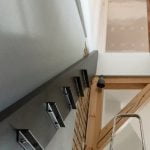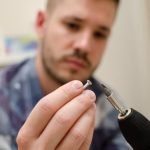Struggling with poor cell coverage at home? In this article, we will explore how to improve cell coverage at home, so you can stay connected wherever you are in your house. Whether it’s making phone calls, sending texts, or using mobile data, having good cell coverage is essential for smooth communication and connectivity. Let’s dive into the importance of good cell coverage at home and learn how to enhance it for a seamless experience.
The first step in improving cell coverage at home is assessing your current signal strength. Understanding the factors affecting your cell coverage, such as location, building materials, and network providers, will help you identify areas for improvement. We’ll also delve into tips for enhancing your signal through Wi-Fi calling and signal boosters.
Furthermore, we’ll discuss home network optimization and outdoor solutions for better cell reception. By maximizing your Wi-Fi connection and exploring alternative options like cellular network extenders and femtocells, you can ensure overall connectivity and convenience at home. Stay tuned as we uncover effective strategies to boost your cell coverage and stay connected effortlessly.
Assessing Your Current Cell Coverage
When it comes to determining the strength of your cell signal at home, there are a few methods you can use to assess your current coverage. Here are some steps for assessing your current cell coverage:
1. Check Your Phone’s Signal Strength: Most smartphones have a feature that allows you to check the signal strength in decibels (dBm). You can access this by entering the phone’s diagnostic mode or by using a third-party app. The lower the number, the weaker the signal.
2. Conduct Call Quality Tests: Make test calls from different areas of your home and pay attention to call clarity, dropped calls, and static. This will give you an idea of where your signal is strongest and weakest.
3. Use Signal Mapping Apps: There are apps available that can map out your cell coverage at home and show you areas with weak or strong signals. These apps can provide valuable insight into dead zones or areas where signal strength is poor.
Assessing your current cell coverage is an important first step in improving connectivity at home. Once you have a better understanding of where your signal is strong and weak, you can take steps to improve cell coverage at home for overall convenience and improved connectivity. By knowing how to determine the strength of your current signal, you can make informed decisions on what steps to take next to enhance your cell coverage.
Understanding the Factors Affecting Cell Coverage
Cellular coverage at home can be affected by a number of factors, including your location, the building materials of your home, and even the network provider you are using. Understanding these factors is crucial in finding ways to improve cell coverage at home.
One of the factors that affect cell coverage at home is the location of your residence. If you live in a rural area or in a spot surrounded by hills and trees, it can be more challenging to get good cell reception. In urban areas, tall buildings and other structures can also obstruct signals. Knowing the geographical challenges of your location can help you strategize how to improve cell coverage at home.
Another factor affecting cell coverage is the building materials used in your home. Materials like concrete, metal, and low-e glass can weaken cellular signals, making it harder for your phone to receive and transmit data. This means that even if you’re with a strong network provider, the materials used in your residence could still cause poor cell reception.
In addition to these factors, your choice of network provider also plays a major role in determining your overall cell coverage. Network providers differ in terms of signal strength and availability, so choosing one that has better coverage in your area can significantly improve cell reception at home.
| Factors Affecting Cell Coverage | Impact |
|---|---|
| Location | Rural areas or areas surrounded by hills and trees may have weaker signals. |
| Building Materials | Concrete, metal, and low-e glass can weaken cellular signals causing poor reception indoors. |
| Network Provider | Different providers have varying signal strengths and availability in different areas. |
Tips for Improving Cell Coverage at Home
Having strong cell coverage at home is essential for staying connected with friends, family, and colleagues, as well as for accessing important information and services. Unfortunately, many people face the frustration of poor cell reception within their own homes. However, there are several strategies that can be utilized to improve cell coverage at home and ensure a reliable connection.
One effective way to improve cell coverage at home is by utilizing Wi-Fi calling. This feature allows you to make and receive calls using your Wi-Fi connection instead of relying solely on your cellular network. Most modern smartphones support Wi-Fi calling, and it can be easily activated in the device settings. By using Wi-Fi calling, you can bypass weak cellular signal areas within your home and make clear, uninterrupted calls over your Wi-Fi network.
Another option for improving cell coverage at home is the use of signal boosters. Signal boosters work by capturing an existing outdoor cellular signal, amplifying it, and then rebroadcasting it within your home. This can significantly improve the strength of your cellular signal, leading to better call quality and faster data speeds. Additionally, signal boosters are relatively easy to install and come in a variety of models to suit different needs.
To further enhance your cell coverage at home, consider implementing these strategies:
- Positioning your router strategically to maximize Wi-Fi coverage throughout your home
- Upgrading to a newer router with improved range and performance
- Using mesh Wi-Fi systems to create a seamless network that covers every corner of your home
By taking advantage of these tips and tools for improving cell coverage at home, you can ensure that you have a strong and reliable connection for both voice calls and data usage. Whether you choose to utilize Wi-Fi calling or invest in a signal booster, these options can make a significant difference in the quality of your cellular connection within your home.
Home Network Optimization
Assessing Your Wi-Fi Network Strength
One of the key factors in improving cell coverage at home is optimizing your Wi-Fi connection. Before diving into solutions, it’s important to assess the strength and reliability of your current Wi-Fi network.
You can do this by checking the signal strength in different areas of your home using a smartphone or a Wi-Fi analyzer app. This will give you a better understanding of which areas may need an improved Wi-Fi signal to enhance cell coverage.
Upgrading Your Router
If you find that certain areas of your home have weak or spotty Wi-Fi signals, it might be time to consider upgrading your router. Older routers may not provide the strong and consistent signal needed for optimal cell coverage. Look for a router with advanced features such as dual-band connectivity, beamforming technology, and multiple antennas to ensure better coverage throughout your home.
Placement and Environmental Factors
The placement of your router can also significantly impact its ability to provide strong Wi-Fi signals for improved cell coverage. Be sure to place your router in a central location within your home, away from obstructions and interference-causing devices such as microwaves and cordless phones.
Additionally, consider the use of Wi-Fi extenders or mesh systems to further expand the reach of your Wi-Fi network, helping to eliminate dead zones and improve cell coverage across all areas of your home.
By addressing these factors and implementing the necessary improvements, you can maximize your Wi-Fi connection for better cell coverage at home.
Outdoor Solutions
When it comes to improving cell coverage at home, outdoor solutions can often provide the boost needed for improved reception. Whether you live in a rural area or a neighborhood with dense foliage, installing antennas and repeaters can be an effective way to enhance your cell signal.
Antennas for Enhanced Reception
One outdoor solution to improve cell coverage at home is to install an external antenna. This type of antenna is designed to receive and transmit signals from nearby cell towers, providing a stronger connection for your devices inside your home. Depending on your location and the network you use, there are various types of antennas available, such as omni-directional or directional antennas. By pinpointing the best location for an external antenna, you can significantly improve your cell coverage.
Repeaters for Extending Signal Range
Another outdoor solution to consider is the installation of a cellular signal repeater. These devices work by capturing the existing cell signal from outside your home, amplifying it, and then broadcasting it inside. This extends the range of the original signal, providing improved coverage throughout your living space. Repeaters come in different forms including analog and digital models, allowing you to choose one that best fits your needs based on the size of your home and specific coverage challenges.
Alternative Options
Cellular network extenders and femtocells are alternative options for improving cell coverage at home. These devices work by boosting the signal strength from your cellular network provider, providing better coverage and connectivity within your home. Cellular network extenders are designed to improve coverage in specific areas of your home, while femtocells create a small cell site within your home to enhance signal strength.
Cellular network extenders and femtocells can be a great solution for areas with weak or spotty cell coverage. These devices work by connecting to your existing internet connection and using it to improve the cell signal within your home. By doing so, they can help eliminate dead zones and improve call quality, data speeds, and overall connectivity on your mobile devices.
It’s important to note that cellular network extenders and femtocells may require some initial setup and configuration. Additionally, they may come with a cost depending on your cellular provider and the specific device you choose. However, for those struggling with poor cell coverage at home, these alternative options can be an effective way to improve connectivity and ensure that you have reliable access to your cellular network indoors.
| Device | Function |
|---|---|
| Cellular Network Extender | Improves coverage in specific areas of the home |
| Femtocell | Creates a small cell site within the home for enhanced signal strength |
Final Thoughts
In conclusion, having good cell coverage at home is essential for staying connected and maintaining convenience in our daily lives. As we have learned, assessing the strength of your current signal and understanding the factors affecting cell coverage are crucial first steps in improving connectivity. By taking advantage of Wi-Fi calling, signal boosters, and maximizing your home network, you can significantly enhance the quality of your cell coverage.
Furthermore, considering outdoor solutions such as installing antennas and repeaters can also greatly improve cell reception, especially in areas with poor coverage. Exploring alternative options like cellular network extenders and femtocells can provide additional support in boosting your signal strength at home. Overall, these tips and strategies are key to ensuring overall connectivity and convenience for all your communication needs.
In today’s digital age, a reliable cell coverage at home is not just a luxury but a necessity. By implementing the tips outlined in this article, you can take control of your connectivity and ensure that you have the best possible cell coverage at home. With a strong signal and improved network connection, you can enjoy seamless communication and stay connected with friends, family, and work even from the comfort of your own home.
Frequently Asked Questions
How Can I Make My Cell Signal Stronger at Home?
There are several ways to improve your cell signal at home. You can try moving closer to a window, avoiding walls and metal objects, or using a Wi-Fi calling feature if available. Additionally, you can consider installing a signal booster or femtocell to enhance your signal strength.
How Can I Boost My Signal Coverage?
To boost your signal coverage, you can invest in a quality external antenna and place it in an elevated area outside your home. This can help capture a stronger signal from nearby cell towers. Another option is to use a cell phone signal booster or femtocell to amplify the signal within your home.
Are Cell Boosters Worth It?
Cell boosters can be worth it if you consistently struggle with poor cell reception at home or work. They work by capturing an existing weak signal, amplifying it, and then rebroadcasting it within a given area.
However, before purchasing one, it’s important to research different models and consider factors such as the size of your space and the strength of the incoming signal.

I’m thrilled to have you here as a part of the Remodeling Top community. This is where my journey as an architect and remodeling enthusiast intersects with your passion for transforming houses into dream homes.





